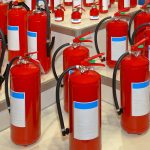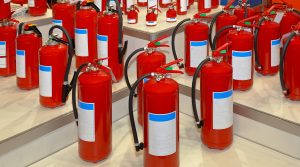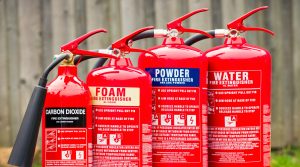
What Happens During a Fire Extinguisher Inspection?
Introduction
Fire extinguisher inspections are an integral part of workplace and building safety protocols. Regular inspections ensure that fire extinguishers are fully functional and compliant with regulatory standards, helping to protect people and property in the event of a fire. Understanding the inspection process provides insights into maintaining a safe environment and avoiding potential liabilities.
The Importance of Fire Extinguisher Inspections
Fire extinguishers are the first line of defense in controlling small fires before they escalate. However, a malfunctioning or expired extinguisher can lead to dangerous situations. Regular inspections verify that extinguishers are in proper working condition, ensuring readiness in emergencies.
Fire Extinguisher Inspection Checklist
A comprehensive fire extinguisher inspection follows a structured process to assess various aspects of the equipment. Below are the key steps involved:
1. Checking the Accessibility
Fire extinguishers must be easily accessible and not obstructed by furniture, storage items, or equipment. Inspectors verify that each unit is mounted in a visible and reachable location according to fire safety codes.
2. Examining the Physical Condition
The exterior of the fire extinguisher is thoroughly inspected for dents, rust, corrosion, or leaks. Any signs of physical damage may indicate compromised functionality, necessitating repair or replacement.
3. Verifying the Pressure Gauge
The pressure gauge indicates whether the extinguisher is adequately charged. The needle should be within the recommended pressure range; if it falls below or exceeds the limits, the extinguisher may not function correctly and may require servicing or recharging.
4. Inspecting the Safety Seal and Tamper Indicator
The safety seal and tamper indicator confirm that the fire extinguisher has not been used or tampered with. A broken or missing seal suggests possible prior use, making it necessary to recharge or replace the extinguisher.
5. Checking the Hose and Nozzle
The hose and nozzle must be free of cracks, clogs, or obstructions. Inspectors ensure that they are securely attached and that no foreign objects are blocking the discharge path.
6. Confirming the Manufacturing and Expiry Dates
Each fire extinguisher has a manufacturing date, which helps determine its service life. Inspectors check whether the extinguisher has exceeded its recommended usage period and if hydrostatic testing is required.
7. Reviewing Inspection Tags and Maintenance Records
Fire extinguishers should have an inspection tag that logs previous checks and maintenance activities. Reviewing this tag helps inspectors ensure compliance with required inspection frequencies and identify any recurring issues.
Professional vs. Self-Inspection
While routine visual inspections can be conducted by staff members monthly, a certified fire safety professional should perform annual inspections and maintenance. Professional inspections involve in-depth testing and servicing to confirm that extinguishers meet regulatory standards set by fire safety authorities.
Conclusion
Regular fire extinguisher inspections play a vital role in fire safety preparedness. By ensuring that fire extinguishers are in optimal condition, businesses and property owners can enhance workplace safety, comply with regulations, and prevent fire-related disasters. Establishing a consistent inspection schedule helps mitigate risks and ensures that these life-saving devices are always ready for use in an emergency.






